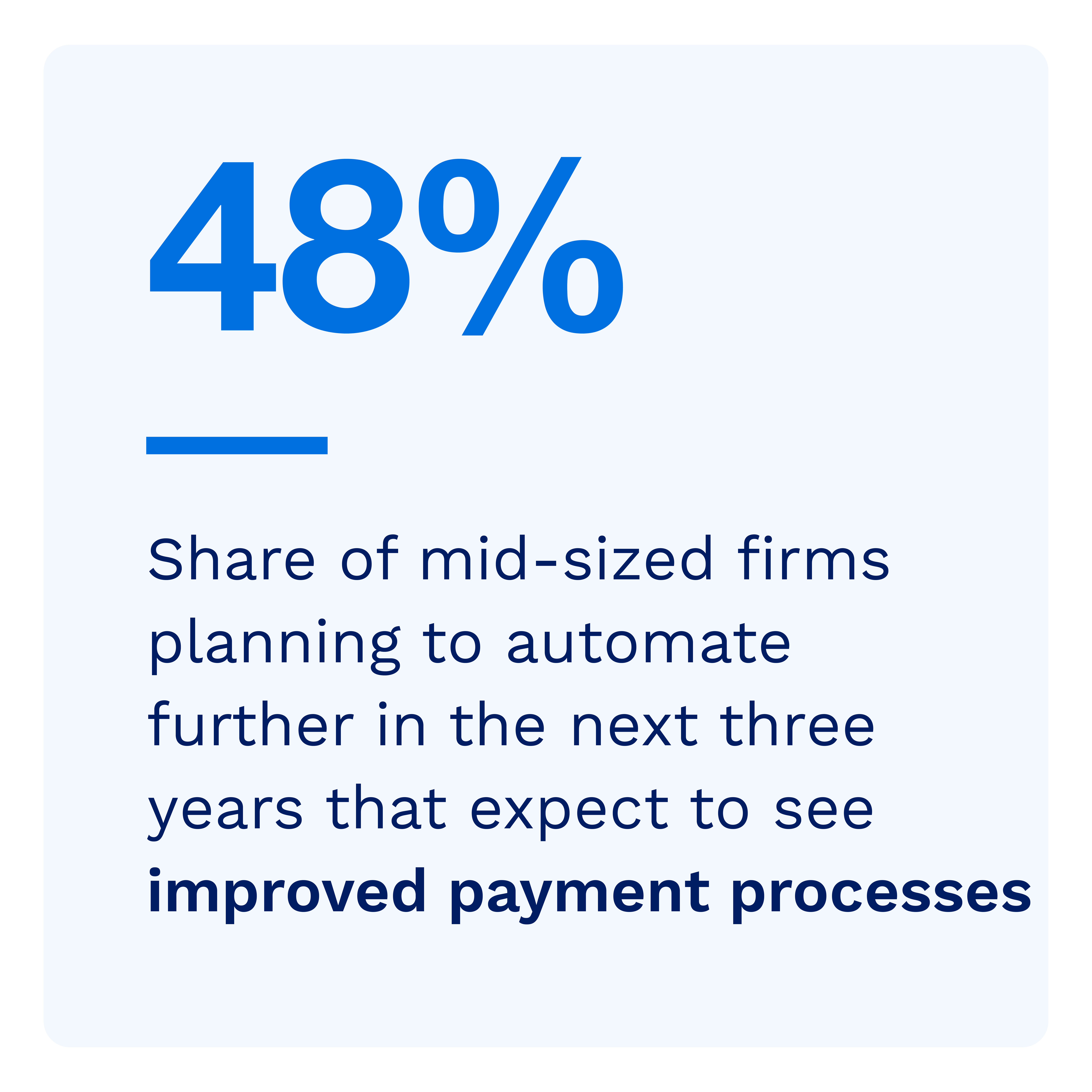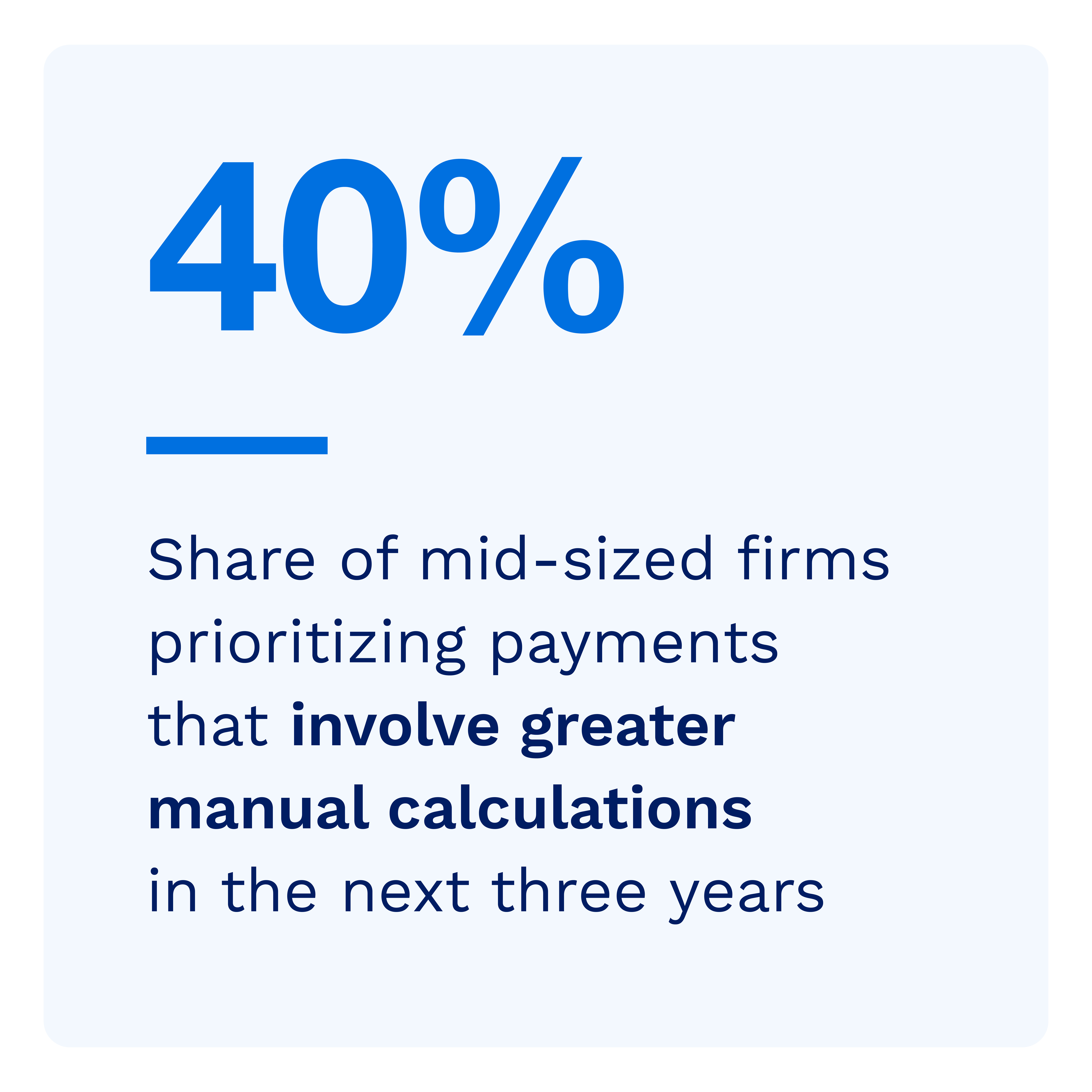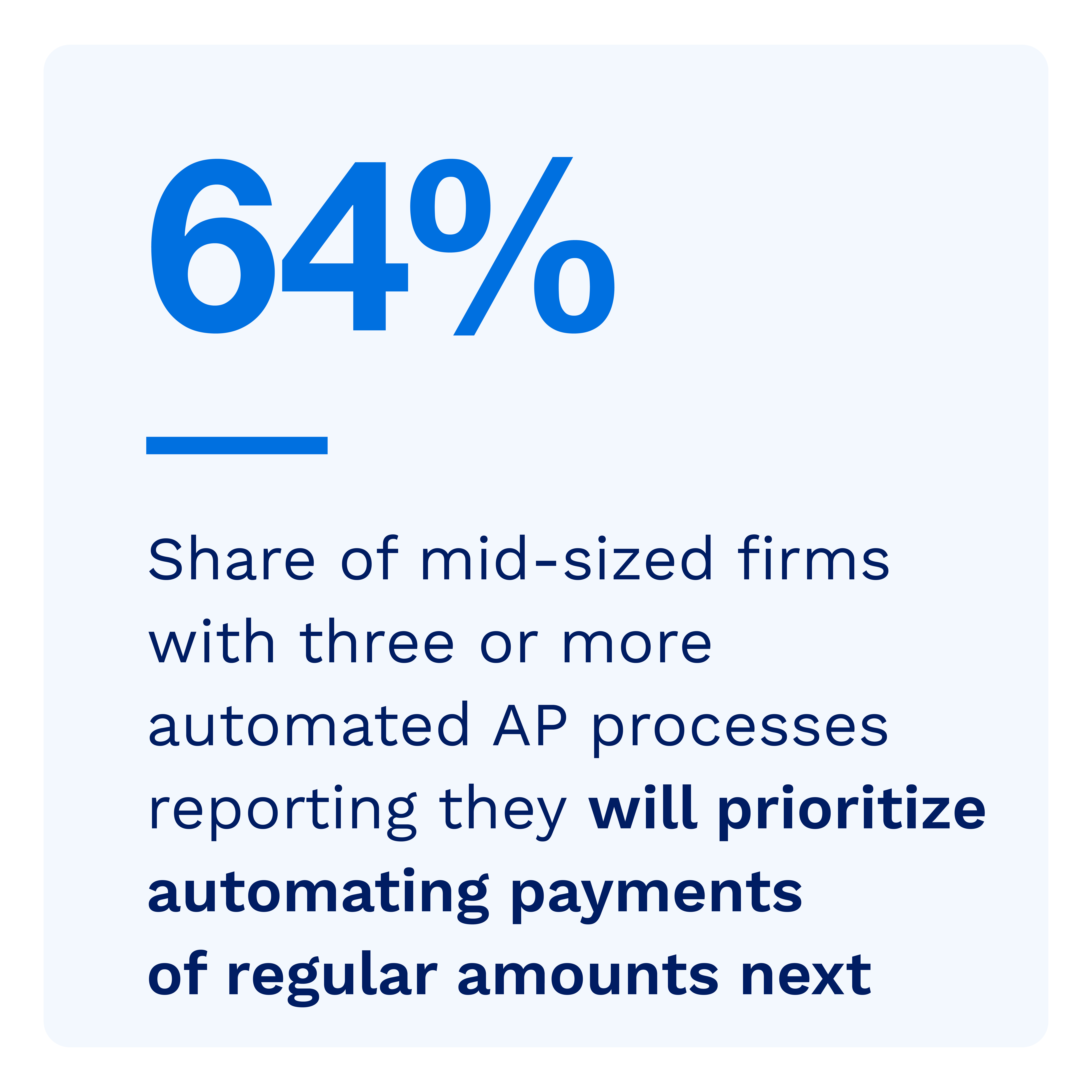Mid-Sized Firms Lag Enterprise Peers in Automating Payments and Receivables

More than 90% of mid-sized firms — those annually generating $3.5 million to $15 million in revenue — that plan to further automate their accounts payable (AP) and accounts receivable (AR) processes anticipate getting more accurate, efficient or streamlined processes. This technology-driven approach reduces the time and labor involved in processing transactions, helping to explain why 44% of mid-sized firms anticipate greater savings or increased cash flow from future automation innovation.
Organizations that automate can also cut labor costs and reduce errors by minimizing the need for manual intervention. Automated systems process high volumes of transactions swiftly, and 51% of mid-sized firms expect improved data availability and insights gleaned from transaction trends analyzed in aggregate.
These are some of the key findings in “Accounts Payable and Receivable Trends: What’s Next in Automation,” a PYMNTS Intelligence and American Express collaboration. The study’s findings are based on a survey of 412 executives with day-to-day and strategic leadership responsibilities in AP, AR and payments strategy.
Automation offers many advantages to firms.
Firms expect automation to bring wide-ranging improvements and help them remain strong against economic headwinds. Mid-sized firms that have fully automated their AP processes enjoy nearly double the supplier satisfaction. A significant 44% of mid-sized firms anticipate cost savings and enhanced cash flow as a direct result of implementing further automation within the next three years. A slightly larger group, 48%, expects to see payment processes accelerate, with more reliable payments and a broader range of payment options emerging.
Current automation levels influence the benefits firms anticipate from automating additional processes.
Partial automation, while beneficial, does not capture the full spectrum of improvements in accuracy and efficiency that complete automation offers. Ninety-five percent of firms that have automated all AP processes report achieving greater accuracy, efficiency and streamlining of processes. In contrast, 84% of those that have partially automated say the same. The data suggests, then, that there should be no half-measures. By fully automating processes, mid-sized firms can gain substantial operational efficiencies and cost savings.
Between 35% and 36% of mid-sized firms have not automated at all.
Thirty-six percent of firms that have not automated any AP processes and 35% of those that have automated AR processes expect high growth in the next three years. Mid-sized firms annually generating between $3.5 million and $15 million reveal no clear trend toward automation. This stance suggests these firms are taking a range of approaches to automating AP and AR operations. Roughly 13% to 15% of mid-sized firms anticipate high growth, suggesting that hesitating to automate may link to modest growth goals or a lack of readiness to scale.
Adopting automation might not only reflect but also drive a firm’s growth trajectory, presenting a significant implication for finance operations and indicating that proactive approaches to updating financial processes could catalyze expansion. Download the report to learn how AP and AR executives at mid-sized firms are approaching automation.

